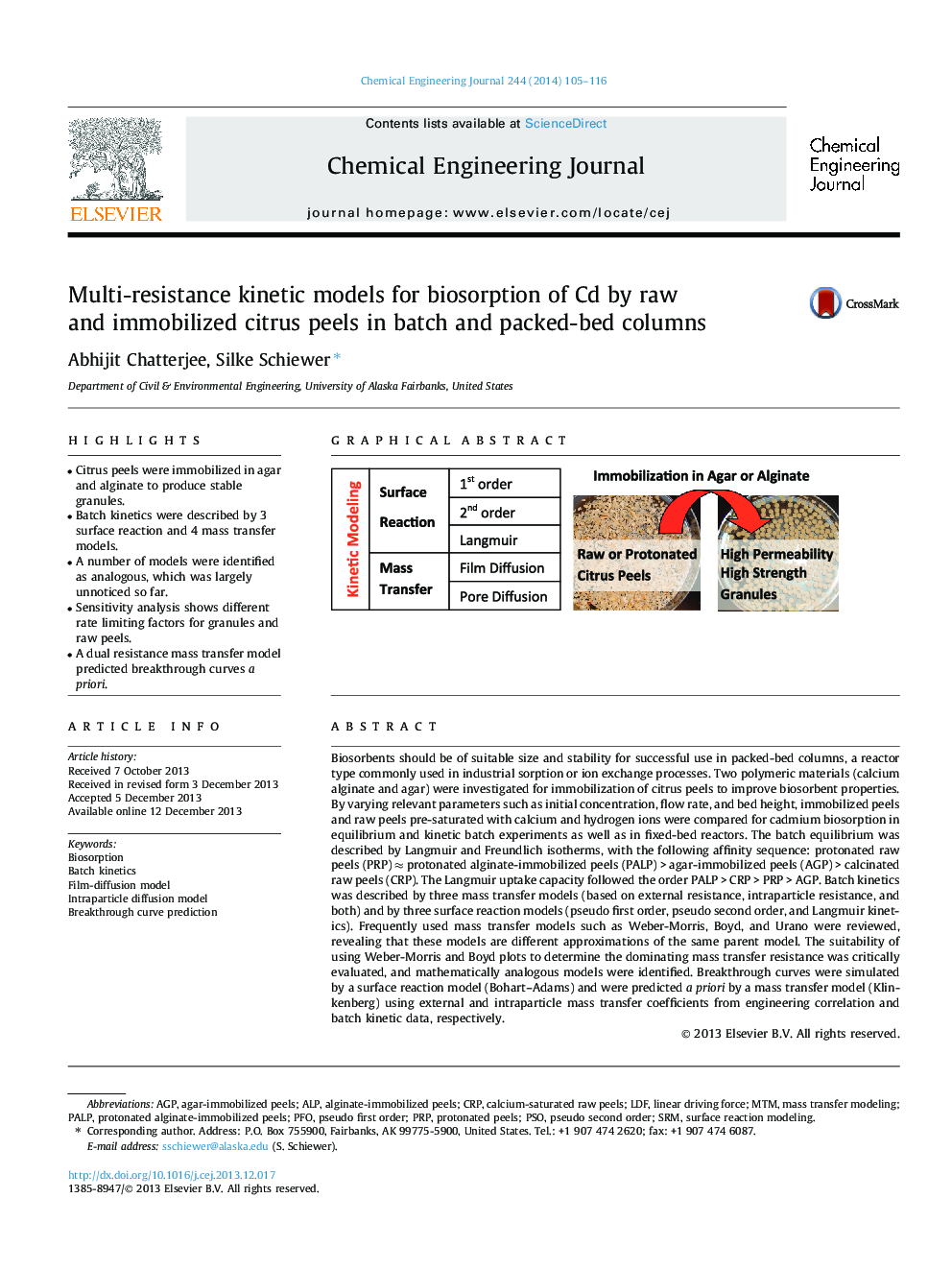| Article ID | Journal | Published Year | Pages | File Type |
|---|---|---|---|---|
| 147751 | Chemical Engineering Journal | 2014 | 12 Pages |
•Citrus peels were immobilized in agar and alginate to produce stable granules.•Batch kinetics were described by 3 surface reaction and 4 mass transfer models.•A number of models were identified as analogous, which was largely unnoticed so far.•Sensitivity analysis shows different rate limiting factors for granules and raw peels.•A dual resistance mass transfer model predicted breakthrough curves a priori.
Biosorbents should be of suitable size and stability for successful use in packed-bed columns, a reactor type commonly used in industrial sorption or ion exchange processes. Two polymeric materials (calcium alginate and agar) were investigated for immobilization of citrus peels to improve biosorbent properties. By varying relevant parameters such as initial concentration, flow rate, and bed height, immobilized peels and raw peels pre-saturated with calcium and hydrogen ions were compared for cadmium biosorption in equilibrium and kinetic batch experiments as well as in fixed-bed reactors. The batch equilibrium was described by Langmuir and Freundlich isotherms, with the following affinity sequence: protonated raw peels (PRP) ≈ protonated alginate-immobilized peels (PALP) > agar-immobilized peels (AGP) > calcinated raw peels (CRP). The Langmuir uptake capacity followed the order PALP > CRP > PRP > AGP. Batch kinetics was described by three mass transfer models (based on external resistance, intraparticle resistance, and both) and by three surface reaction models (pseudo first order, pseudo second order, and Langmuir kinetics). Frequently used mass transfer models such as Weber-Morris, Boyd, and Urano were reviewed, revealing that these models are different approximations of the same parent model. The suitability of using Weber-Morris and Boyd plots to determine the dominating mass transfer resistance was critically evaluated, and mathematically analogous models were identified. Breakthrough curves were simulated by a surface reaction model (Bohart–Adams) and were predicted a priori by a mass transfer model (Klinkenberg) using external and intraparticle mass transfer coefficients from engineering correlation and batch kinetic data, respectively.
Graphical abstractFigure optionsDownload full-size imageDownload as PowerPoint slide
